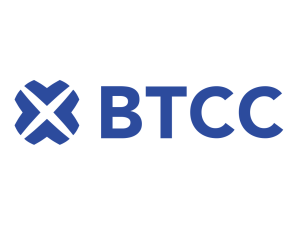Ethereum Merge Guide: Why is it a Big Deal?
In the near future, Ethereum will switch to a proof-of-stake system, which will supposedly cut the network’s energy consumption by more than 99 percent.
The Ethereum Merge is important for more than just cryptocurrency investors. Since 2014, developers have been working on various iterations of Merge, which will finally allow the second largest blockchain to drastically cut its carbon footprint. If the Merge goes as planned, Ethereum’s power consumption will drop by more than 99 percent.
The implications of that are enormous. Those who aren’t fans of cryptocurrencies often claim that digital tokens like bitcoin and ether are pointless and waste a lot of energy. In contrast to the second, which is true regardless of who you ask, the first is very debatable and subjective. Bitcoin and Ethereum’s carbon emissions are too obvious to be ignored in a time when reducing our collective impact on the environment is widely considered to be of paramount importance.
Proof of stake, which has been envisioned for ethereum since before the blockchain was created in 2014, will be adopted in the Merge. It has been repeatedly postponed because to the technical difficulty involved and the ever-growing sums of money at stake. The Merge is one component of a suite of upgrades collectively known as “ether 2.0,” which reformat the underlying architecture of the blockchain. The target date is the middle of September.
At the Eth Shanghai conference in March, Ethereum co-creator Vitalik Buterin said, “We’ve been working on proof of stake for nearly seven years now, but finally all of that work is coming together.”
This is all the information you’ll need to understand the significance of the big day.
What makes crypto so detrimental to environment?
The function of cryptocurrency miners is crucial to grasping the Merge.
Imagine you were interested in cryptocurrency mining. A mining rig is a collection of powerful computers used to run specialized software in an attempt to solve difficult cryptographic riddles. Hundreds of thousands of miners from all over the world are competing with your rig to solve the same challenge. In order to add new information to the blockchain, your computer must decrypt the cryptography before anybody else’s can. This is called “validating” a block. It’s to your advantage to do so, as it results in: For each block they verify, bitcoin miners receive 6.25 bitcoin (now worth about $129,000), whereas ethereum miners earn 2 ether (currently worth around $2,400) plus gas (the transaction fees paid by customers) (which can be huge).
The only way to compete is with a supercomputer, therefore people usually fill warehouses with their rigs. Both Bitcoin and Ethereum use this technique, known as “proof of work,” to validate transactions and add them to their respective distributed ledgers. The key idea is that it makes it possible for the blockchain to be both decentralized and safe.
Analyst at Delphi Digital Jon Charbonneau described it as “the civil resistance mechanism.” According to Charbonneau, every blockchain needs to operate on a limited resource that bad actors can’t monopolize. That resource is energy, in the form of the electricity needed to run a mining operation, for proof-of-work blockchains.
At now, a malicious actor would need control of 51% of the network’s power to successfully take over Ethereum. There are hundreds of thousands of machines in this network, making it extremely difficult for evil actors to gain control of more than half of it. This would be an extremely expensive endeavor.
It’s safe to use the system. Despite the prevalence of fraud and hacking in the cryptocurrency industry, neither the Bitcoin nor Ethereum blockchains have ever been attacked. However, the disadvantages are glaringly clear. As cryptographic puzzles grow in complexity and the number of miners competing to answer them increases, the amount of energy required to do so also rises dramatically.
In what ways does crypto use energy?
Large quantities. It is believed that Bitcoin uses roughly 150 terawatt hours of electricity per year, which is more than 45 million individuals in Argentina consume. Comparatively, Ethereum’s energy consumption is closer to that of Switzerland (9 million people), at around 62 million terawatt hours.
The majority of that power originates from eco-friendly resources. If you believe the Bitcoin Mining Council, renewable energy accounts for about 57% of the energy required to mine bitcoin. (Members of BMC are reliant on their own self-reporting.) In this case, self-interest rather than concern for the environment is driving the action. Since wind, solar, and hydro power plants produce electricity at a low cost, mining activities frequently locate in their vicinity.
Even yet, the carbon footprint is huge. It is predicted that Ethereum produces as much carbon dioxide as Denmark does.
The role of Ethereum merge
Ethereum will replace its current energy-intensive proof-of-work mechanism with a much less resource-intensive proof-of-stake system during the Merge.
Staking is the practice of depositing cryptocurrency in order to earn interest in the crypto community. For instance, terraUSD stablecoin developers provided staked terraUSD holders with a 19 percent interest rate: An investment of $10,000 yields $11,900 a year later (until it imploded).
When proof of stake is implemented, miners will no longer need to validate new blocks by completing cryptographic problems. They will instead contribute ether tokens to a common fund. Let’s pretend these coins are lottery tickets. Verifying the next block and receiving the associated rewards is contingent on having your token number called.
It remains a costly endeavor. To become a block verifier, or “validator” as they are now called, a minimum of 32 ether ($48,500 USD) must be staked. In this setup, users contribute raw cash to validate blocks rather than power. Overpowering a proof-of-stake network would require 51 percent of all staked ether, whereas in a proof-of-work network, 51 percent of the network’s power is enough.
The Ethereum Foundation estimates a 99.65 percent reduction in electricity consumption once cryptographic difficulties are removed from the system.
Why called “the Merge”
Merging two blockchains is the means through which Ethereum will make the change from proof of work to proof of stake.
The “mainnet” Ethereum blockchain is the one that regular people utilize, whereas the “testnet” blockchains are for programmers exclusively. The beacon chain was developed by Ethereum programmers in December 2020. In many ways, the beacon chain may be thought of as the successor of ethereum.
Since its inception eighteen months ago, the beacon chain has been operating as an independent proof-of-stake chain. As time has progressed, validators have added blocks to the chain, but these blocks have contained neither data nor transactions. The system has been put through its paces in preparation for the big day.
Data now stored on Ethereum’s mainnet will be migrated to the beacon chain during the Merge, making the beacon chain the primary blockchain on the Ethereum network. Prior to the Merge, engineers have been putting the new blockchain through its paces on several ethereum testnets, simulating real-world usage scenarios.
Charbonneau claimed, “If you talk to the ethereum devs, and I have, they would tell you that if proof-of-work mining became prohibited overnight, they could do the Merge right now and it’d be great.” He further clarified that the proof-of-stake execution itself is not where most of the development effort is presently being directed, but rather on the apps and clients built on top of Ethereum. There are no concerns about the protocol itself, but “if they conducted the Merge today, it would be buggy for a few months.”
Is there risk involved?
Absolutely. The integration has been compared by ethereum’s detractors, who are usually bitcoin supporters, to switching the plane’s engine while it’s in flight. As well as the plane, the $183 billion worth of ether in circulation is at risk.
There may be a wide variety of technological flaws with the new blockchain. There have been multiple total outages of the Solana blockchain this year, another proof-of-stake system. Unlike ethereum, solana has extremely low transaction costs, making it simpler for bots to flood the network. However, technological issues are still possible.
Some skeptics question the level of safety proof of stake could offer in comparison to proof of labor. Charbonneau thinks it would be safer because of a feature called “slashing”; if validators are proved to have acted deliberately, their staked ether can be burnt and their access to the network lost.
“Let’s say somebody assaults Bitcoin with a 51 percent majority today; you have very little recourse,” Charbonneau added. “They control all of the miners, so they can keep attacking you indefinitely. This is a straightforward process when supported by evidence of stake. It’s easy to prove if you assault the network, and then we’ll just slash you to pieces, taking your money with us.”
“You only have one shot at this. When that happens, you won’t be able to repeat the action.”
Could this lead to an increase in the cost of ether?
Many people are banking on the Merge to boost Ether’s price, which has fallen by almost 60% since the beginning of the year. No one knows for sure what the Merge will do to the price of ether, although this has been a fiercely contested topic in crypto circles in recent months.
When the Merge occurs, the price of ether is expected to rise for two main reasons. The first is the belief that lessening Ethereum’s carbon impact will encourage large corporations to buy ether and develop ethereum apps.
“The reality is, if you take the environmental care aspect away, there are a lot of people who are not going to utilize it [ethereum] and not want to invest in it purely based on ESG grounds,” Charbonneau added, referring to environmental, social, and corporate governance criteria for ethical investing. “Many tech firms have publicly stated, ‘We will not take any action until after the Merge.'”
The second line of defense has a little more technical approach. Due to the rising cost of electricity and the declining value of cryptocurrencies, even profitable mining operations have started to lose money by dabbling in ethereum mining. Most of the cryptocurrency mined is sold by the miner to cover their operating expenses. There is daily sale pressure of millions of dollars as miners unload their ether. Since validating blocks via proof of stake cryptography is substantially cheaper than mining them via proof of work cryptography, miners (or “validators” as they will be known) will no longer have to sell all of the ether they earn.
Alternatively, many contend that the Merge’s costs are already factored into the market. This has been in the works for seven years, and it is argued that many large investors have bet in ethereum in the hopes that the Merge will be successful.
When do we expect the Merge to take place?
As of now, September seems like a good month for the Merge to take place. Tim Beiko, of the Ethereum Foundation, suggested September 19 in a recent developer conference call.
It’s “very thrilling to see it coming together,” as one developer put it on Twitter, and the “merge timeframe” isn’t final. Consider this a schedule for your preparations.
The statement caused the price of ether to spike to above $1,600. While still much below its all-time high of $4,800, this is good news for ethereum supporters in the midst of the crypto winter.










